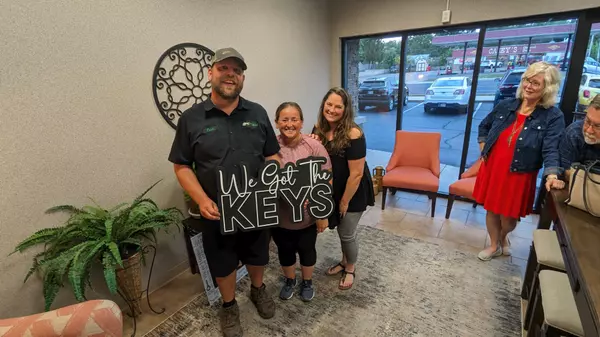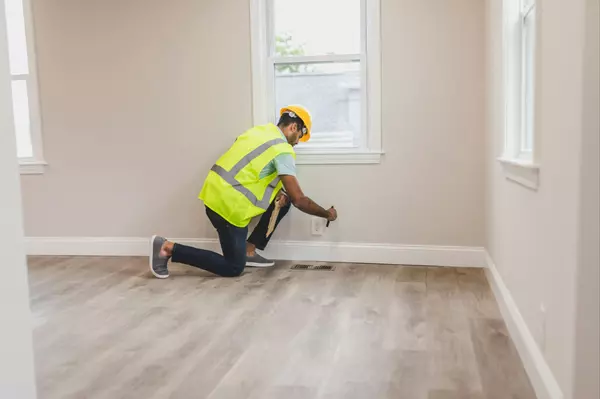Realtor Safety Tips: Expert Advice from an Indianapolis SWAT Leader

In the fast-paced world of real estate, safety remains paramount for agents. Whether hosting an open house, showing a property, or meeting a new client, being prepared and vigilant can significantly mitigate risks. To provide comprehensive guidance, we've collaborated with Mike Hart, a seasoned SWAT leader and the owner of Asset Protection & Consulting, LLC, to offer expert insights into safeguarding oneself in every situation.
Situational Awareness
Situational awareness serves as the foundation of safety, empowering individuals to perceive and respond effectively to potential threats. Mike underscores the importance of maintaining acute awareness of one's surroundings, emphasizing that recognizing hazards or dangers is essential. While complete prevention may not always be feasible, heightened situational awareness can substantially enhance reaction times, enabling proactive responses.
- Be aware of your surroundings: Vigilance is key. By actively observing your environment, you can detect potential threats before they escalate.
- Recognize threats: Stay attuned to signs of danger, such as suspicious behavior or unfamiliar individuals lingering nearby.
- Increased reaction time: Heightened awareness facilitates quicker responses, allowing you to navigate challenging situations more effectively.
Train for the Encounter
Training plays a pivotal role in preparing individuals to handle adverse circumstances confidently. Mike advocates for trusting one's instincts and cultivating a proactive mindset to anticipate and address potential threats. Engaging in scenario-based training exercises enables individuals to develop appropriate responses and enhance their preparedness for various scenarios.
- Trust your instincts: Intuition often serves as an invaluable guide. If something feels amiss, heed your instincts and take necessary precautions.
- Scenario-based training: Practice responding to hypothetical situations to develop adaptive strategies and bolster preparedness.
- Proactive mindset: Adopting a proactive approach enables individuals to anticipate potential risks and take preemptive measures to mitigate them.
The Rule of "OUT"
Adhering to the Rule of "OUT" underscores the importance of proactive planning and maintaining multiple avenues of escape. By prioritizing strategies for exiting, securing, and neutralizing threats, individuals can bolster their safety measures and enhance their ability to navigate hazardous situations.
- Get out: Always identify exit routes and prioritize leaving the vicinity if a threat arises.
- Lock out: Secure entrances and take measures to prevent unauthorized access to your location.
- Take out: If faced with imminent danger, consider strategies to neutralize threats and protect yourself and others.
The Recon
Conducting thorough reconnaissance before engaging in any real estate activities is paramount for ensuring safety and security. Leveraging available resources, such as online platforms and public records, allows individuals to gather pertinent information and assess potential risks proactively.
- Utilize available resources: Tap into online tools, public records, and social media platforms to gather information about locations and individuals involved.
- Physical reconnaissance: Conduct on-site visits and observe the surrounding area to identify potential hazards or security vulnerabilities.
- Information gathering: Gather relevant details, including property history, neighborhood demographics, and any prior incidents, to inform your safety measures.
The Plan
Formulating a comprehensive plan encompasses proactive measures to mitigate risks and enhance personal safety. By communicating your whereabouts, setting timeframes, and combining training with reconnaissance insights, individuals can exercise greater control over their environment.
- Share your location: Inform trusted contacts of your whereabouts and establish communication protocols to ensure regular check-ins.
- Set timeframes: Establish clear timeframes for meetings or property visits, allowing for accountability and monitoring.
- Integrate training and reconnaissance: Combine preparedness training with insights gathered during reconnaissance to develop proactive strategies for managing potential risks.
The Arrival
Arriving at a location demands careful consideration and proactive measures to enhance safety. By adopting a cautious approach, individuals can minimize exposure to potential threats and maintain control over their surroundings.
- Bring a companion: Whenever possible, attend appointments or property viewings with a trusted companion to enhance safety.
- Scout the area: Conduct a preliminary assessment of the location and its surroundings, noting any potential hazards or suspicious activity.
- Park strategically: Opt for well-lit areas and avoid parking directly in front of the location to minimize exposure.
The Approach
Approaching clients or properties requires attentiveness and readiness to respond to potential risks. By maintaining situational awareness, keeping distractions at bay, and preparing for unexpected situations, individuals can safeguard themselves effectively.
- Stay attentive: Avoid distractions and maintain awareness of your surroundings at all times.
- Minimize distractions: Keep your phone out of sight and focus on observing your environment.
- Be prepared: Carry essential items such as a flashlight and keep your hands free of unnecessary items to facilitate swift responses.
The Meet
Interacting with clients demands vigilance and proactive measures to ensure personal safety. By assessing the environment, identifying exit points, and implementing protective measures, individuals can mitigate potential risks during meetings.
- Assess the environment: Familiarize yourself with the property layout and identify potential exit points or areas of vulnerability.
- Maintain control: Position yourself strategically to maintain control over the interaction and minimize risks.
- Prioritize safety: Implement measures such as letting the client lead when navigating staircases and avoiding positioning yourself between the client and exits.
The Departure
Exiting a location necessitates caution and proactive measures to mitigate risks. By assessing the surroundings, maintaining awareness, and planning alternative routes, individuals can minimize exposure to potential threats during departure.
- Assess the surroundings: Before exiting, conduct a final assessment of the environment and observe for any signs of suspicious activity.
- Plan alternative routes: Consider alternative exit routes and avoid predictable patterns to minimize risks during departure.
- Maintain awareness: Stay vigilant and observant as you leave the location, ensuring readiness to respond to any potential threats.
Protect the Asset
Ultimately, prioritizing personal safety is paramount, with individuals being the most valuable asset. Investing in training, cultivating a resilient mindset, and adopting proactive safety measures are crucial steps toward ensuring personal protection and well-being.
- Invest in training: Equip yourself with the necessary skills and knowledge to respond effectively to potential threats.
- Cultivate resilience: Foster a resilient mindset and determination to survive in challenging situations.
- Prioritize personal protection: Consider investing in personal protective equipment and training to enhance your safety measures.
Prioritizing safety is essential for real estate professionals operating in unknown environments. By incorporating expert insights from Mike Hart and implementing proactive safety measures, individuals can navigate their professional responsibilities with confidence and peace of mind. Stay vigilant, stay prepared, and prioritize your personal safety above all else.
Categories
Recent Posts










